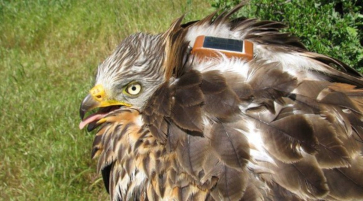Montagu’s harrier stars on world migratory bird day
- SEO/BirdLife and Fundación Iberdrola España joined the celebrations held as part of World Migratory Bird Day on 11 May.
- This spring, 13 Montagu’s harriers were tagged with GPS. It is one of the many species whose numbers are declining, in this instance by 30% over the last decade.
- According to the last national census, it is estimated that there are between 4,200 and 5,300 breeding pairs in Spain.
This year the star of World Migratory Bird Day for SEO/BirdLife was Montagu’s harrier: a trans-Saharan migratory bird of prey, whose populations overwinter in the African Sahel and which is classified as “Vulnerable” in the Spanish Catalogue of Endangered Species.
Classified as “Vulnerable” in the Spanish Catalogue of Endangered Species, The Montagu’s harrier is a trans-Saharan migratory bird of prey, whose populations overwinter in the African Sahel.
It is known that the Spanish Montagu’s harrier populations overwinter in the African Sahel, but tagging with high resolution GPS systems only first took place in 2018. These devices allow the movements and migration patterns of this threatened bird of prey to be tracked from its feeding grounds in Spain to its overwintering areas in Africa and in the places where these birds rest during their migratory journeys.
The conservation of migratory birds is highly complicated as they do not recognise borders and pass through very different countries and continents throughout the year. To ensure their conservation in the future, it is necessary to understand in detail where they breed, where they overwinter, their migratory routes and where they stop to rest during their journeys.
Fundación Iberdrola España has been collaborating with SEO/BirdLife since 2011, and this year they have tagged 3 Montagu’s harriers in Albacete and 2 in Segovia and the tagging of another 7 is planned throughout the rest of Spain in order to learn more and better conserve this species. Fernando García, chairman of the Iberdrola Foundation, has highlighted that “projects like this significantly contribute to achieving the aims of the Sustainable Development Goals, specifically number 15: Life of Terrestrial Ecosystems”.
Montagu’s Harrier, a species in decline
The Montagu’s harrier is one of the many species that are in sharp decline: in the last national census, in 2017, it was estimated there were between 4,200 and 5,300 breeding pairs in Spain, while in 2006 there were 6,000 pairs, which represents a population decline of around 30% in just a decade. The majority of the Montagu’s harrier pairs in Spain are located in cereal growing areas, although they also inhabit tidal marshes and scrub areas.
The main threats to the Montagu’s harrier relate, above all, to its dependence on cereal crops and the intensification of agricultural practices. The mechanised harvesting of cereals and the introduction of early varieties prevent the chicks from completing their development before harvesting, which means the loss of numerous nests under the harvesters.
Migra Programme
The Migra Programme was launched in 2011 by SEO/BirdLife in partnership with Fundación Iberdrola España. It uses the latest geolocation and remote-monitoring technologies to learn about bird movements in greater detail, both within Spain and beyond. This initiative enables information to be gathered on their migratory start and end dates, the places where they stop and their feeding points, the time it takes them to make these journeys, whether routes are repeated in the spring and autumn migrations, the main areas where they overwinter and disperse, and whether the routes are the same year on year. Fundación Iberdrola España is collaborating with this programme within the framework of its activities to support biodiversity, one of its main areas of action.
To date, the Migra Programme has ringed 930 birds from 32 different species, and useful information has been gathered from 509 birds from 31 different species. This programme has over 300 collaborators and 50 collaborating entities from Spain and abroad.

